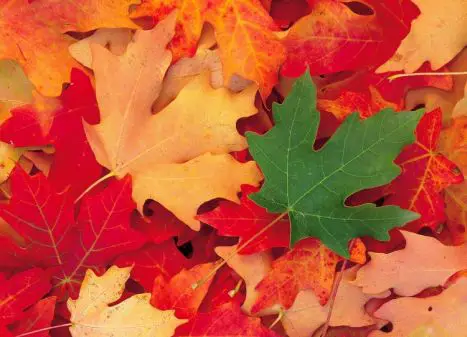
Through their questions, kids often confuse us into believing that we know nothing about nature and its observable yet complicated phenomena. Why do leaves change color is one such question frequently asked by inquisitive kids. Most simply, leaves of deciduous trees do it to survive the winter. Trees absorb all essential nutrients from leaves and store them in their roots. Therefore, leaves look lifeless and pale when winter sets in.
During sunny months, leaves are green because they utilize chlorophyll pigment to convert sunlight, water and carbon dioxide into sugars. They also keep storing essential nutrients like nitrogen and phosphorous and so look vibrant. In winter, cooler temperature, change in rainfall and weather, and less number of daylight hours force tree leaves to change their color. While absorbing essential nutrients and storing them in their roots, trees create a sort of reserve for the following spring. When trees have absorbed the last of the chlorophyll, the autumn leaves begin to appear.
Tree leaves lose their chlorophyll in winter since auxin production stops. Auxin is responsible for cutting off circulation of water, nutrients and sugar to the leaves in winter. Subsequently, it allows carotene to impart a yellow shade to leaves. Anthocyanin, on the other hand, provides orange and red color to tree leaves.